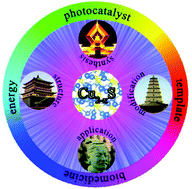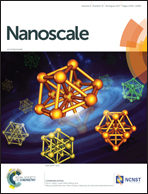Diversified copper sulfide (Cu2−xS) micro-/nanostructures: a comprehensive review on synthesis, modifications and applications
Abstract
As a significant metal chalcogenide, copper sulfide (Cu2−xS, 0 < x < 1), with a unique semiconducting and nontoxic nature, has received significant attention over the past few decades. Extensive investigations have been employed to the various Cu2−xS micro-/nanostructures owing to their excellent optoelectronic behavior, potential thermoelectric properties, and promising biomedical applications. As a result, micro-/nanostructured Cu2−xS with well-controlled morphologies, sizes, crystalline phases, and compositions have been rationally synthesized and applied in the fields of photocatalysis, energy conversion, in vitro biosensing, and in vivo imaging and therapy. However, a comprehensive review on diversified Cu2−xS micro-/nanostructures is still lacking; therefore, there is an imperative need to thoroughly highlight the new advances made in function-directed Cu2−xS-based nanocomposites. In this review, we have summarized the important progress made in the diversified Cu2−xS micro-/nanostructures, including that in the synthetic strategies for the preparation of 0D, 1D, 2D, and 3D micro-/nanostructures (including polyhedral, hierarchical, hollow architectures, and superlattices) and in the development of modified Cu2−xS-based composites for enhanced performance, as well as their various applications. Furthermore, the present issues and promising research directions are briefly discussed.

- This article is part of the themed collection: Recent Review Articles


 Please wait while we load your content...
Please wait while we load your content...